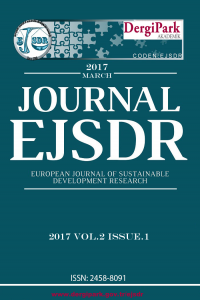Öz
Credit
risk measurement of the banking system, the dominant component of the financial
system of a country, is an important aspect where the interest of academics,
economic agents and other professionals has been considerably increased,
especially following the global financial crisis. In the last decade,
non-performing loans have been in the spotlight almost all over the world,
since their large and uncontrolled increase would lead to the eventual
bankruptcy of the banking system as a whole. Analysis of the factors affecting
credit risk for the banking system is an important analysis and can be seen as
the key for credit risk management. This starts by the identification of direct
and indirect determinants which exhibit an impact on credit risk, followed by
the assessment of the impact (negative or positive impact). The main objective
of this paper is to analyse the link between the macroeconomic developments and
the banking credit risk in Albania, recently affected by unfavorable economic
and financial conditions and to which, on this matter, the literature has not
given a particular attention yet. The econometric model used is that of
multiple linear regression where as the dependent variable is obtained the
indicator of non-performing loans of the Albanian banking system and as
independent variables are chosen a number of macroeconomic indicators and
indicators of assets and liabilities of the system itself. Employing data
approaches to this country over the period 2005-2014, I conclude that the
banking credit risk is significantly affected by the macroeconomic environment:
the credit risk increases when GDP growth, credit growth rate and the share
price indices decrease and rises when the interest rate and loan to deposit
ratio increase. Moreover, it is also positively affected by an appreciation of
the real exchange rate.
Anahtar Kelimeler
Banking System Credit Risk Macroeconomic Determinants Non Performing Loans
Kaynakça
- Boudriga, Taktak and Defi, Banking supervision and nonperforming loans: a cross-country analysis, Journal of Financial Economic Policy Vol. 1 No. 4, 2009, pp. 286 – 318, 2009.
Öz
Kaynakça
- Boudriga, Taktak and Defi, Banking supervision and nonperforming loans: a cross-country analysis, Journal of Financial Economic Policy Vol. 1 No. 4, 2009, pp. 286 – 318, 2009.
Ayrıntılar
| Bölüm | Makaleler |
|---|---|
| Yazarlar | |
| Yayımlanma Tarihi | 25 Şubat 2017 |
| Yayımlandığı Sayı | Yıl 2017 Cilt: 2 Sayı: 1 |


